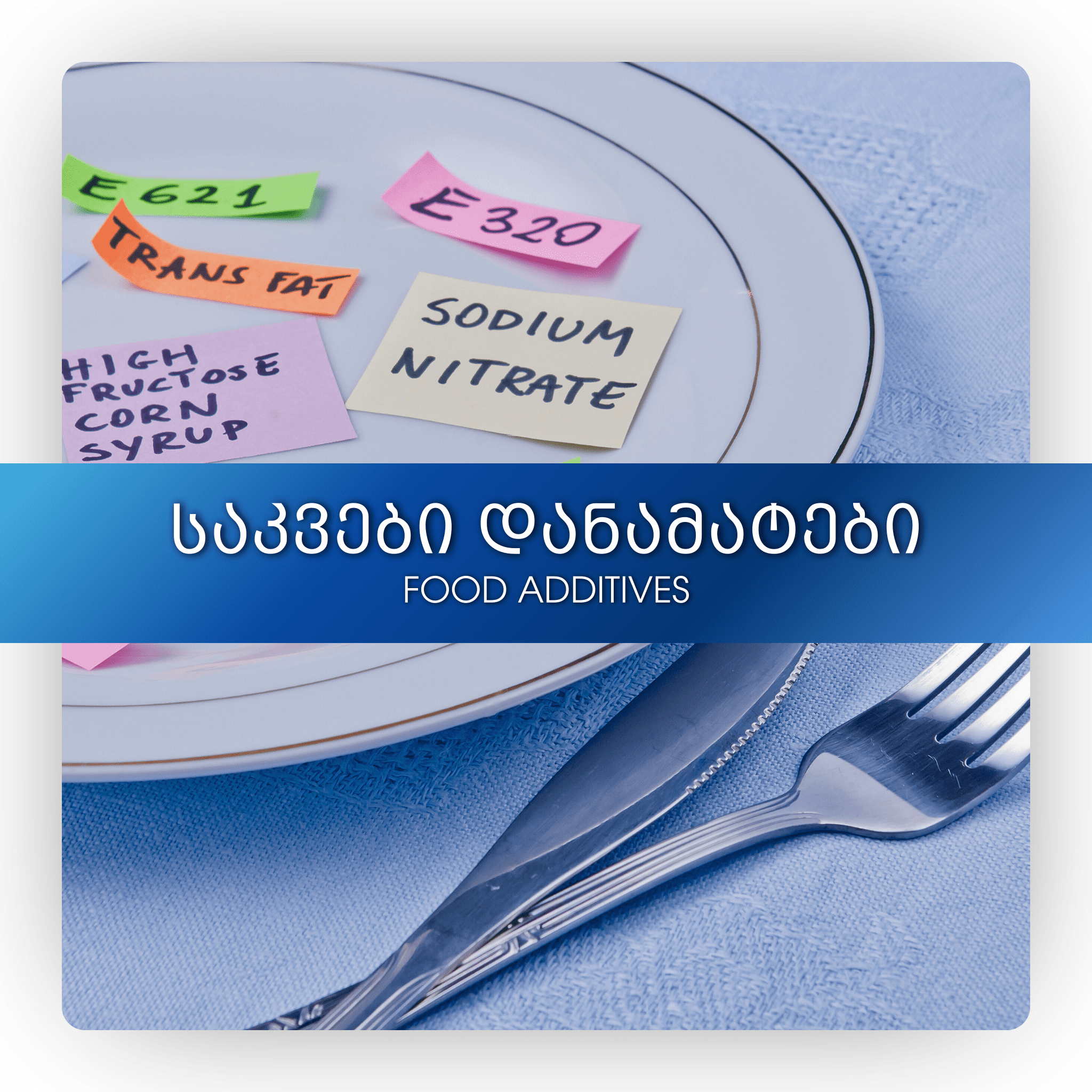Food Additives
Food additives are called natural or synthetic substances, the addition of which to food products or raw materials intended for humans is allowed by law to improve production technology, to give the products desired organoleptic properties (taste, aroma), to give a better appearance (color, consistency), to increase the term time and reduce cooking time of the dish.
Since ancient times, people have used sweet substances in food, which are contained in fruits, berries, juices, honey. The aromatic substances contained in the roots. Taste and aroma enhancers have been known for a long time - various plant spices: pepper, cumin, cloves, ginger roots, fennel seeds, cinnamon bark, dill, mint, wormwood and other spices. In ancient Egypt and the Tigris and Euphrates basin, many thousands of years ago, they knew how to make beer from leavened bread. Since ancient times, people have known sour vinegar - acidified wine.
Food additives, according to the technological purpose, as already mentioned, can be divided into the following groups:
1. Dyes - substances whose purpose is to give different colors to products.
2. Preservatives – substances that prevent spoilage of the food product (which can be caused by the animal activity of microbes and mold fungi) and thus increase the shelf life of the products.
3. Antioxidants – substances that slow down the oxidation process of fats during storage.
4. Acidifying substances added to the productimparts a certain sour taste or changes the acidity of the environment (for example to change the pH in canning, or to prevent sugaring of jams and jams).
Some bases are included in the composition of baking powders for confectionery products or in the recipe of powders used for sparkling drinks.
5. Aromatic and flavoring substances – various natural and synthetic aromatic substances, which are used in the production of aromatic essences, or directly to give a certain aroma to the product. They also include artificial sweeteners.
6. Gel-forming, stabilizing substances and emulsifiers, the purpose of which is to create and maintain a certain consistency for the product.
7. Substances that improve the quality of food products or ensure complete ripening of some of them. This group includes chemical substances that improve individual indicators of product quality (aroma, consistency), substances that are used to polish and glaze confectionery products, enzyme preparations and others.
All food additives can be grouped according to three signs:
According to 1) functional purpose, 2) source of intake and 3) chemical structure.
According to the functional purpose, food supplements can be divided into five main groups:
The first group includes dyes, bleaches and color stabilizers. In the second group - taste regulators (acids, alkalis, bases, sweeteners, flavor enhancers).
The third group includes flavorings.
The fourth group includes consistency and texture regulators (gel and foam formers, emulsifiers, thickeners, liquefiers, anti-sticking agents, anti-caking agents, moisture-retaining agents).
The fifth group includes biologically active food additives (antibacterial and fungicidal preservatives, antioxidants, vitamins, amino acids, protein-vitamin concentrates, enzyme and phytopreparations, trace elements, synthetic organic substances).
Depending on the source of intake, the food supplement can be synthetic, semi-synthetic, which is obtained by modifying natural substances, and natural, for example, riboflavin, chlorophyll, carotenes, anthocyanins.
According to their chemical structure, food additives are divided into the following groups: inorganic compounds (salts, titanium and iron oxides, etc.); Aliphatic, alicyclic, aromatic and heterocyclic organic synthetic products (additives within each series are divided into groups according to the content of this or that functional group or substituent); Organic natural compounds (natural dyes, wax, natural polymers - cellulose, starch, vitamins, aromatic substances contained in vegetable essential oils, antibiotics, antioxidants, etc.).
In international practice, a digital coding system for food additives has been adopted, according to which each additive is assigned an E-number (or E-code).
Below are the main ones corresponding to these designations of nutritional supplements
Groups:
• E100 – E182 – dyes;
• E200 and later – preservatives;
• E300 and later – antioxidants and also oxidation process inhibitors, acidity regulators;
• E400-E430 – stabilizers and thickeners;
• E430 –E500 – emulsifiers or preservatives.
• E501 – E585 – leavening agents that prevent the formation of costs and sticking of the product;
• E620 – E642 – additives used to enhance the taste and aroma of products;
• E643 – E899 – spare indexes;
• E900 – E1521 – antifoaming agents and sweeteners.
For example, if you find the indexes E101 and E132 on the product label, it means that it contains dyes - riboflavin and indigocarmine and etc.
Recently, in all countries of the world, the use of such chemical substances and natural compounds that prevent spoilage of food products and beverages and improve their quality has been dramatically expanded. These substances have no nutritional value and are foreign to the human body. A necessary condition for their use is that they should not be harmful to health. We must also take into account that food supplements can be consumed by people of all ages throughout their lives, that they can be used by both healthy and sick people. It is not allowed to use food additives to falsify food products.
